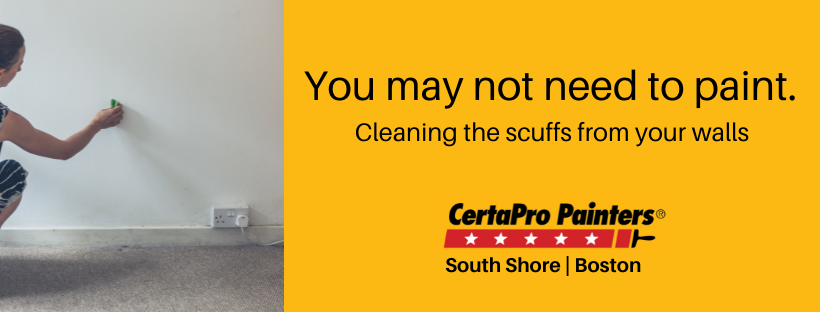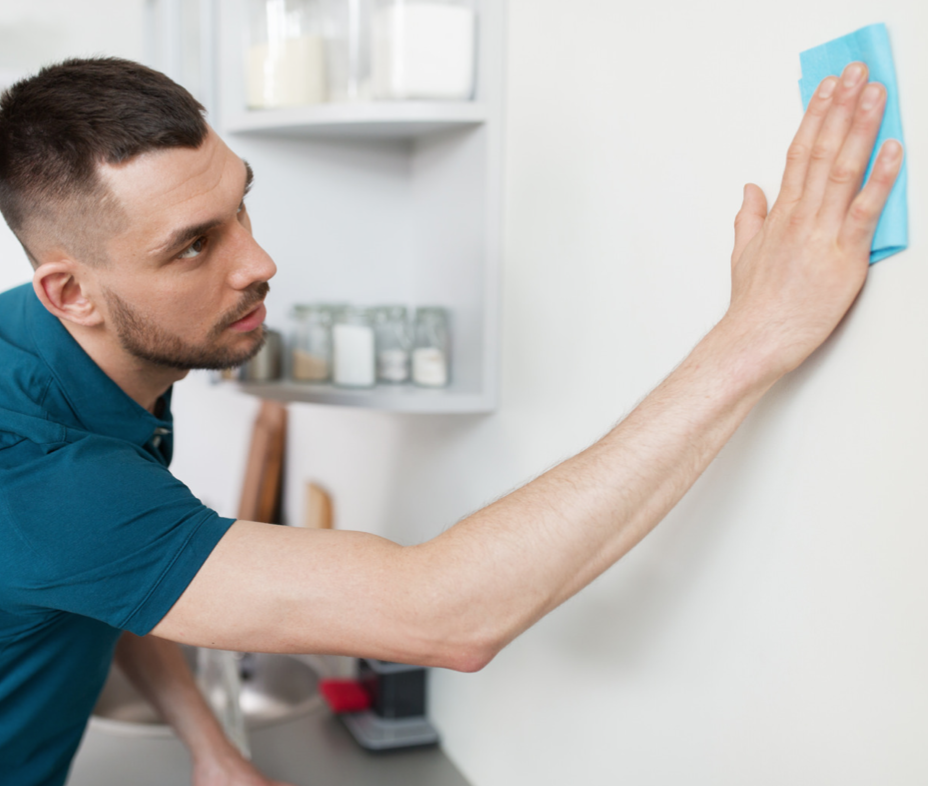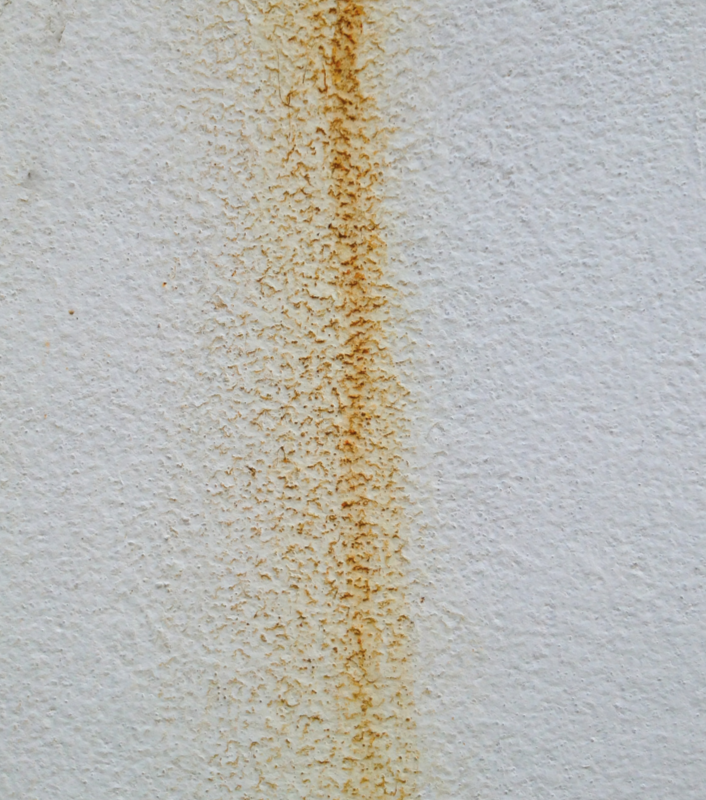
Cleaning your walls:
Posted on July 4, 2021
If you like the color of your walls but hate the dirt or scuffs, you might not need to paint your walls at all; you may just need to clean them!
Cleaning your walls isn’t difficult and you won’t need any unique supplies to get the job done:
- Liquid hand or dish soap
- Hydrogen peroxide
- Water
- Soft rags and cloths – an old t-shirt is fine!
- Vacuum with a dust brush attachment
- Baking soda
Here’s how we recommend cleaning your painted walls – this is gentle enough for both plaster walls and drywall:
Dust your walls using the dust brush attachment to your vacuum or a dry mop head wrapped with a soft, clean cloth. Dust from top to bottom, being careful not to scratch the wall with the rigid parts of the mop or vacuum.
 Mix a cleaning solution using approximately one gallon of warm water with a squirt of soap. Less soap is better than more soap because you want to be able to rinse the soap thoroughly when you’re done. Any time you leave even a tiny bit of soapy residue on a wall, it will attract dirt in the future, defeating this process’s whole purpose. Soak a cloth in the liquid, and wring it out well.
Mix a cleaning solution using approximately one gallon of warm water with a squirt of soap. Less soap is better than more soap because you want to be able to rinse the soap thoroughly when you’re done. Any time you leave even a tiny bit of soapy residue on a wall, it will attract dirt in the future, defeating this process’s whole purpose. Soak a cloth in the liquid, and wring it out well.
Test an inconspicuous area of your wall with your soap solution to ensure it won’t damage the drywall or plaster. Try washing a section of walls behind a sofa or piece of artwork to start – you want to ensure the solution won’t damage the sheen or pigment of the paint. While you may be tempted to skip this step, it’s essential that you make sure that your painted walls will hold up to the washing.
Wash your walls using circular motions. Gently wash in circular motions. Begin at the top of the wall and clean your way down it. Make sure your cloth is damp and wrung out, so you’re applying very little moisture to the wall’s surface – this will prevent watermarks or paint bubbling. Apply light pressure as you wash the wall.
Tackling wall-stains:
A paste of baking soda and water is a great general stain cleaner for your wall:
 Make a half cup of baking soda paste with a quarter cup of water until a paste forms. Carefully rub the paste into the stained part of the wall, and you should be able to lift the stain out. You may need to let this sit for a second to get the mixture to work its magic.
Make a half cup of baking soda paste with a quarter cup of water until a paste forms. Carefully rub the paste into the stained part of the wall, and you should be able to lift the stain out. You may need to let this sit for a second to get the mixture to work its magic.
Hydrogen peroxide helps lift red wine stains from your wall:
Add a bit of hydrogen peroxide to your damp cleaning cloth dipped in the soap solution and press onto the red wine stain for a few minutes, and you’ll likely see the red wine stain disappear. Blot the wet spot using a paper towel or clean cloth until you don’t see the stain.
Permanent Marker stains on your wall:
We recommend Amodex cleaner for permanent marker stains on your walls. Once you have kids around Sharpies, keep a bottle of Amodex handy – it even works to remove marker from fabric. Follow the directions on their website, and don’t use too much elbow grease – the Amodex cleaner should work on its own – if it doesn’t work immediately, be patient.
Cleaning nicotine stains on your wall:
These present a significant challenge that likely will end with you having to prime over the stains using Zinnser Binz alcohol-based primer. For walls only lightly stained by nicotine, try washing as directed above with your soapy solution first, then try undiluted vinegar on the nicotine stains directly. Be careful not to get the walls too wet to damage the plaster or drywall.
Cleaning wall scuffs:
Scuffs on walls are usually more easily removed when they are fresh. Try the following in this order to see if you can wipe these marks off your walls:
- Wash with plain water directly on the scuff itself – try to resist washing the surrounding paint by limiting yourself to a Q-Tip or small rag or even a tennis ball. The felt of the tennis ball often helps release the scuff.
- A pencil eraser can work wonders on scuff marks but stay on the scuff mark without erasing the surrounding paint. Try a pink and a white pencil eraser, as both work on different types of scuffs. Try this in a very inconspicuous area first, as this may damage the sheen of your paint.
- Gently clean the scuff with a solution of one tablespoon of baking soda to a cup of warm water.
- White (non-gel toothpaste) on the scuff can help if your walls or trim have a satin or semi-gloss finish.
- WD-40 can be applied to scuffs directly in a well-ventilated room. Once you are happy with the result, rinse off the W9-40’s slippery residue.
- Try a Magic Eraser. The “magic” in these melamine foam sponges is in their slightly gritty texture, so be careful by testing an inconspicuous area first (behind a couch) to be sure you’re not damaging the paint’s sheen. If you do damage the paint or remove the sheen, the wall will appear spotty where you have rubbed too hard – so be very gentle and stay directly on the scuff mark. Because it’s easy to overdo the scrubbing with a Magic Eraser even when you’re not scrubbing too hard, this method should be a last resort and undertaken only if you understand the possible “spotty” outcome.
Rinse and dry your walls.
Soak a clean cloth in clean water, and wring it out well. Wipe the wall with the cloth to rinse. It’s super-important to rinse the walls even if you don’t think there’s any soap on them. Because soap attracts dirt, leaving any trace of soapy residue on the walls will result in walls that attract dirt like a magnet in the future.
Dry your walls by gently running a soft, dry cloth over them. If it’s a nice day, open your windows and allow the fresh air to help you circulate air. If it’s humid inside your home, you may want to save cleaning your walls for a drier day to ensure they dry more quickly.
How to Keep Your Walls Clean
Regularly wash high-traffic areas of your walls near light switches and doorknobs. Consider a scuff-resistant paint the next time you paint your home. These new scuff-resistant formulas prevent hockey pucks from scuffing the walls around rinks – so they will certainly work on your kitchen hallway down which your toddler rides his tricycle!
Some stains require a fresh coat of interior paint to cover them – in that case, loop in CertaPro Painters by getting an interior painting quote – just email [email protected] or click the red box at the top right of this page to schedule a quote online.
< BACK TO OUR INDEX OF ARTICLES, TIPS, AND ADVICE
You might also like to read:
Our maintenance recommendations for horsehair plaster walls
Choosing new wall colors with our free color consultant
Painting over stained woodwork, trims and doors inside your home





